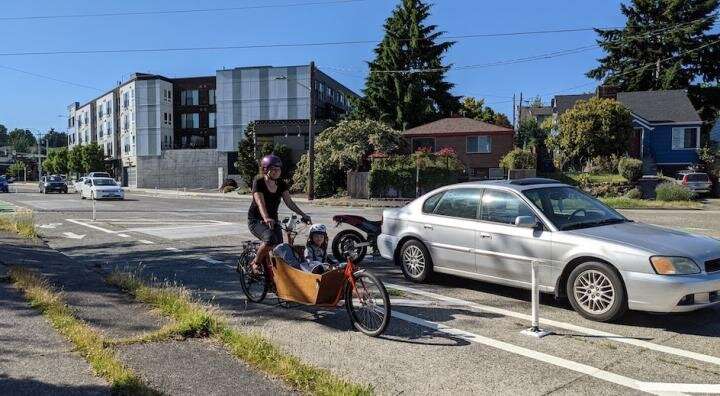Can greater access to e-bikes get more people biking?

Replacing more car trips with bike trips can be a great way to reduce carbon emissions, but biking can be tough if you have physical limitations, have a long way to travel or just don't want to get sweaty on your way to work. For many people, an electric bicycle (or e-bike) can solve all these problems. In fact, one study found that people who owned e-bikes replaced 62% of the trips they would normally take by car with their e-bike. Unfortunately, e-bikes are too expensive for many people.
So what's the best way to help more people access e-bikes?
That's what John MacArthur, sustainable transportation program manager at Portland State's Transportation Research and Education Center (TREC), wants to know. MacArthur has been studying e-bikes for many years and is a leader in the field. Recently, he teamed up with Cameron Bennett, a master's student in transportation engineering at PSU, Chris Cherry at the University of Tennessee Knoxville and Luke Jones at Valdosta State University in Georgia, to conduct an ambitious three-phase study on e-bike incentives.
In the first phase of the project, MacArthur and Bennett compiled a live tracker of current and proposed e-bike incentive programs in North America (see the e-bike incentive tracker here). In their research, they were surprised to learn that the design of many of the incentive programs for e-bikes has been somewhat arbitrary.
"Generally, it seems that little thought was given to the potential of the specific incentive value to induce new purchases that would not otherwise have happened for particular groups or income brackets," Bennett said.
This lack of strategic program design likely limits the effectiveness of these incentives and prevents getting more e-bikes to people who normally would not consider them or be able to buy them.
To see what works and what doesn't when it comes to incentives, MacArthur and Bennett conducted a deep dive analysis of 75 current, past and proposed e-bike incentive programs in North America for the second phase of their study. The researchers interviewed program managers, industry leaders and academics to develop a set of recommendations for how to design an effective e-bike incentive program. They published their findings in a publicly available white paper.
In their research, MacArthur and Bennett came across some elements common to many incentive programs that may limit their effectiveness. These include:
- only 25% of incentive programs restricted incentives to low and middle income riders, which means incentive money is likely going to people who can already afford e-bikes
- most programs provided $200-600 in incentives, which leaves the $2,600 average cost of an e-bike unaffordable for many people
- half of the incentive programs require participants to purchase their e-bike from a local dealer, which is good for bike shops but prevents people from being able to buy less expensive e-bikes online
With more information and planning, policy makers may be able to design better e-bike incentive programs. MacArthur and Bennett distilled their findings into a program development flowchart that guides policy makers through steps they can use to design an equitable and effective e-bike incentive program.
These steps include:
- Define guiding principles : What are the goals of the incentive program and how will progress be assessed?
- Identify a target population: Is the program open to everyone? To people below a certain income level? A particular group of people?
- Define the types of e-bikes to be included: Are cargo e-bikes, which are more expensive but may attract more participants, included?
- Select the incentive amount: Will everyone get the same amount regardless? Is the subsidy a flat amount or dependent on the price of the e-bike?
- Define the process: How will the incentive be implemented?
- Identify strategic partners: Will the program include community organizations? Local bike shops? Financial institutions that can offer low-interest loans?
- Administer program and track relevant metrics
- Evaluate program performance: Did the program reach its goals and target the right populations?
For the final phase of the project, MacArthur and Bennett are conducting a study of potential e-bike buyers to see how the design of incentive programs could influence their decision-making. The team is interested in identifying the potential effects of different rebate methods, cash amounts, demographics and other factors.
This study will yield even more insight into what affects people's decision-making, and which types of incentive programs may hit the sweet spot. You can help the team out by taking the survey here.
"Our research shows that e-bikes have the potential to get more people biking for everyday use," says MacArthur. "Getting people out of cars and onto bikes has net positive impacts on carbon reduction, increases physical activity and health, and offers our communities more options for getting around. Increasing access to e-bike incentives, especially for people on a low-income, can help us meet our climate goals faster and improve people's quality of life."
Provided by Portland State University





















